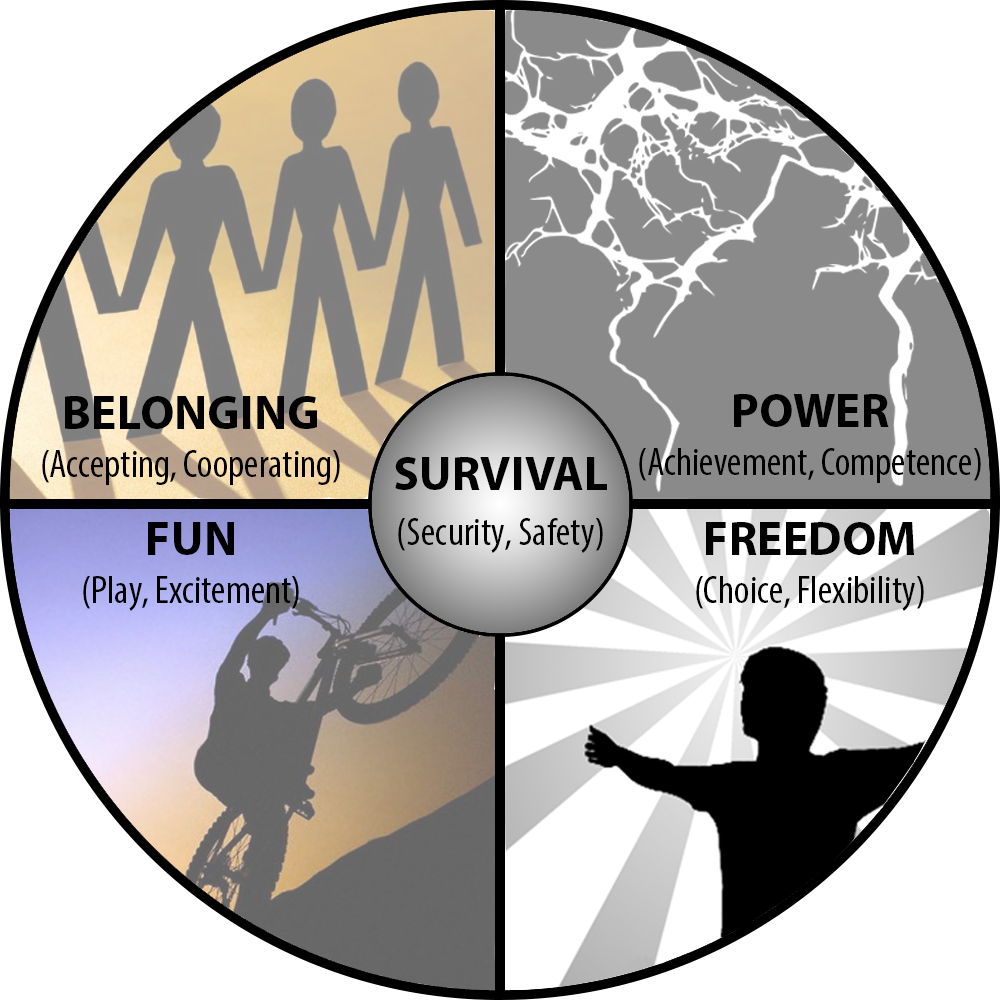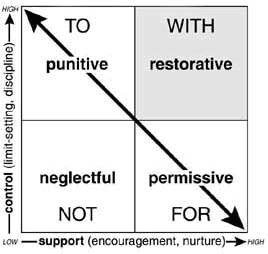Social Responsibility
Social Responsibility, School Culture, and a Sense of Community
North Saanich Middle School and our district continue to work on building community through a philosophy known as Restorative Practices. Restorative Practices is an emerging field of study that enables people to restore and build community in an increasingly disconnected world. Our goals are to simultaneously hold young people accountable; enhance relationships among students, support staff, teachers, administrators, and parents; and build a sense of community in the school.
One way we work on this is by identifying needs. The characteristics of the 5 basic needs include power, belonging, fun, freedom, and survival. This is based on the idea that all behaviour is purposeful and based on motivational needs. Each of us is responsible for meeting our own needs. Helping to create an environment where others can responsibly meet their needs will make a stronger group (see Basic Needs Circle below).
Basic Needs Circle

The fundamental unifying hypothesis of Restorative Practices is disarmingly simple: that human beings are happier, more cooperative and productive, and more likely to make positive changes in their behavior when those in positions of authority do things with them, rather than to them or for them. The Social Discipline Window (see next page) is a simple but useful framework with broad application in many settings. It describes four basic approaches to maintaining social norms and behavioral boundaries. The four are represented as different combinations of high or low control and high or low support. The restorative domain combines both high control and high support and is characterized by doing things with people, rather than to them or for them.
Social Discipline Window

When things go wrong and to respond to challenging behaviour, the following restorative questions are asked:
What happened?
What were you thinking of at the time?
What have you thought about since?
Who has been affected by what you have done? In what way?
What do you think you need to do to make things right?
When someone has been hurt and to help those harmed by others’ actions, the following restorative questions are asked:
What did you think when you realized what had happened?
What impact has this incident had on you and others?
What has been the hardest thing for you?
What do you think needs to happen to make things right?
When we are being restorative we try to engage everyone affected by wrongdoing or conflict in the process of resolution.
Sources: Glasser, W. (1999) Choice Theory (http://www.realrestitution.com/), International Institute for Restorative Practices (https://www.iirp.edu/), and Safer Saner Schools (http://www.safersanerschools.org/)